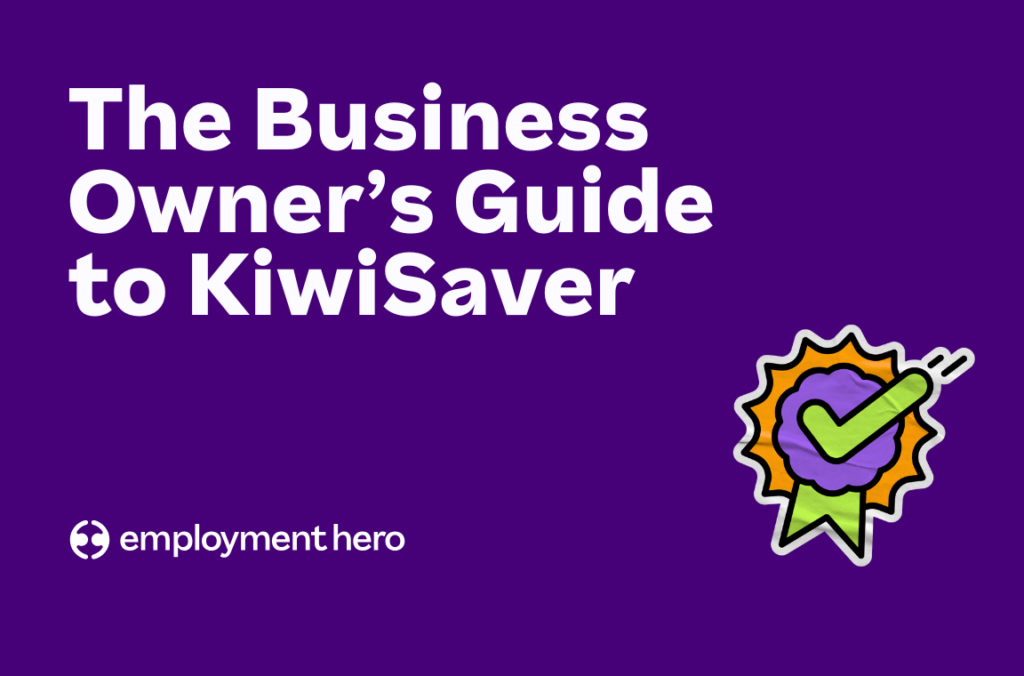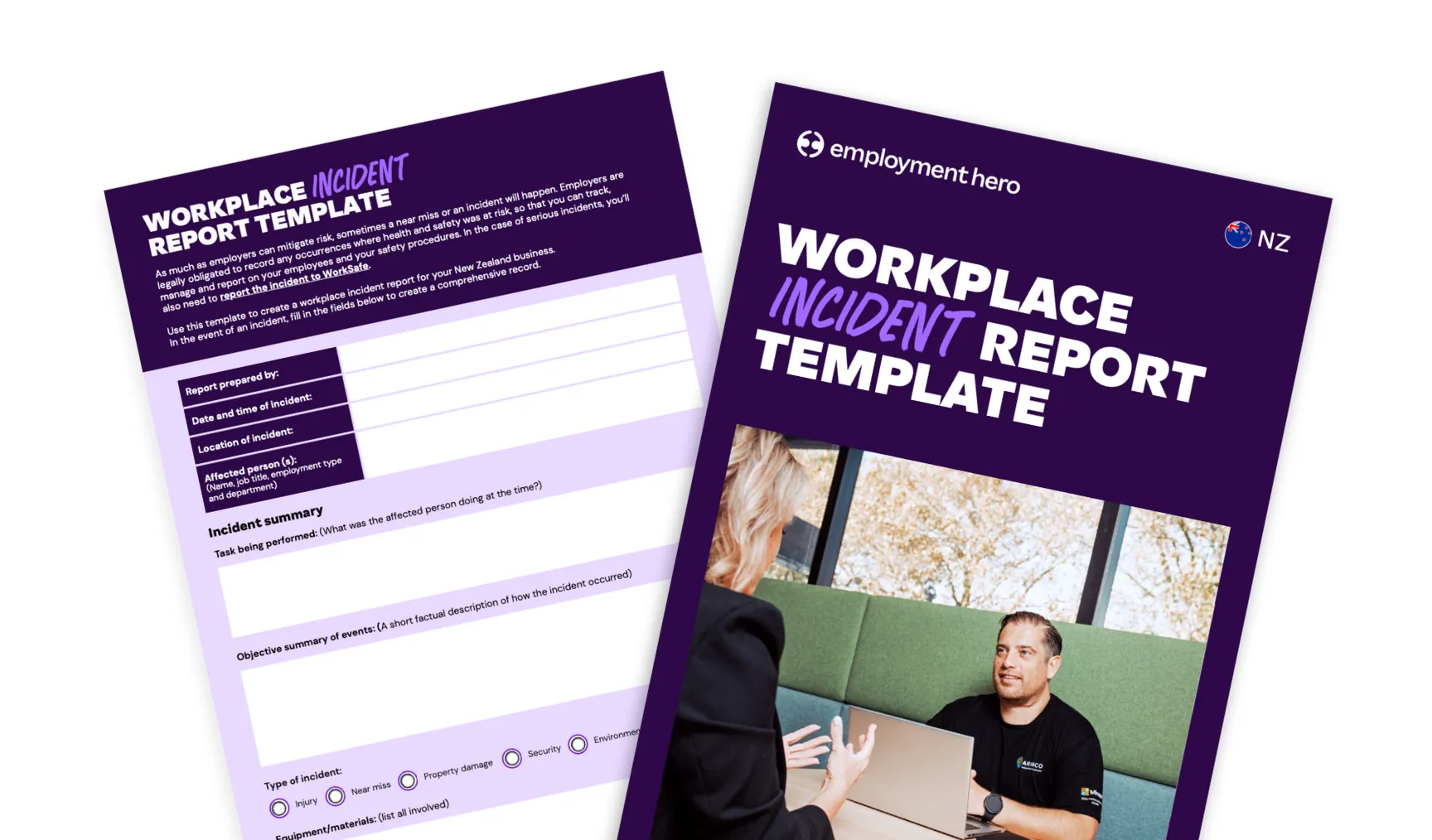The Business Owner’s Guide to KiwiSaver
Published
The Business Owner’s Guide to KiwiSaver
KiwiSaver obligations can feel like just another thing on your already-packed to-do list. But if you’re an employer in New Zealand, it’s something you can’t afford to ignore.
From enrolling new employees to calculating deductions and tax, there’s a lot to manage, especially with changes coming from April 2026.
We’ve created this guide to help you understand your responsibilities and what you need to prepare for. We cover:
- What every business owner needs to know about KiwiSaver obligations — and the upcoming changes
- Practical steps to manage your employer responsibilities
- Key KiwiSaver updates coming in 2026 and beyond
- How to simplify KiwiSaver contributions with the right tools
- Tips for handling casual and temporary staff
Download the Business Owner’s Guide to KiwiSaver for the full breakdown.
Disclaimer: The information in this guide and associated article is relevant as at 1 July 2025 and has been prepared by Employment Hero Pty Ltd ABN (11 160 047 709) (Employment Hero). The views expressed herein are general information only and are provided in good faith to assist employers and their employees. The information is based on data supplied by third parties. While such data is believed to be accurate, it has not been independently verified and no warranties are given that it is complete, accurate, up to date or fit for the purpose for which it is required. Employment Hero does not accept responsibility for any inaccuracy in such data. To the maximum extent permitted by law, Employment Hero will not be liable to any party in contract, tort (including for negligence) or otherwise for any loss or damage arising either directly or indirectly as a result of reliance on, use of or inability to use any information provided in this guide and associated article. Where liability cannot be excluded by law then, to the extent permissible by law, liability is limited to the resupply of the information or the reasonable cost of having the information re-supplied.

What is KiwiSaver and why employers need to care
KiwiSaver is a voluntary retirement savings scheme for employees, but employer contributions are compulsory in most cases. If your employees are eligible and not exempt, you need to: automatically enrol them in KiwiSaver unless they opt out, contribute a percentage of their pay on top of their wages, deduct their chosen contribution rate from their gross pay, apply the Employer Superannuation Contribution Tax (ESCT), and report and submit contributions to Inland Revenue.
From 1 April 2026, the minimum employer contribution rate will increase from 3% to 3.5%, and to 4% by 2028. You’ll also need to contribute for eligible 16–17 year olds.
Common KiwiSaver mistakes and how to avoid them
KiwiSaver responsibilities can catch employers out if you’re not careful. Here are some of the most common mistakes and how you can avoid them.
Missing your KiwiSaver contribution deadline
You need to submit KiwiSaver contributions and details with your PAYE filings. Missing these deadlines can lead to penalties, IRD investigations, or back payments.
How to stay on track: use payroll software that helps automate KiwiSaver deductions and submissions, set reminders for PAYE filing dates, and keep employee details up to date.
Delaying contributions because of cashflow issues
Cashflow constraints don’t exempt you from your KiwiSaver obligations. Even if your cashflow is tight, contributions must still be made on time or you risk penalties.
If you are worried about cashflow, speak to IRD early about potential options, forecast payroll costs using real-time reporting, and plan ahead to avoid last-minute financial pressure.
An employee changes their KiwiSaver provider
If an employee switches to a different KiwiSaver provider, you don’t need to change anything in your payroll system. Just keep processing contributions as usual. IRD will take care of transferring funds to the new provider.
It is still good practice to confirm the employee’s deduction rate has not changed and keep your records current.
Make KiwiSaver admin easier with Employment Hero
KiwiSaver is just one part of your broader payroll and employee management responsibilities. The Employment Operating System helps simplify KiwiSaver contribution tracking, record keeping, and PAYE submissions. You can also manage payroll, rosters, leave, and more, all in one place.
With Employment Hero you can track KiwiSaver status for each employee, apply the correct contribution rates and ESCT, and manage payroll and other HR admin with less manual effort.
Book a free demo of Employment Hero to see how we can help make payroll and KiwiSaver easier for your business.
Download the factsheet
Related Resources
-
 Read more: Making an impact in your first 90 days as a new HR manager
Read more: Making an impact in your first 90 days as a new HR managerMaking an impact in your first 90 days as a new HR manager
With the right preparation, you can make a great impact in your first 90 days as an HR manager.
-
 Read more: Incident report template NZ: free download for businesses
Read more: Incident report template NZ: free download for businessesIncident report template NZ: free download for businesses
Download our free NZ incident report template. Record and report workplace incidents correctly under HSWA and ACC requirements.






















